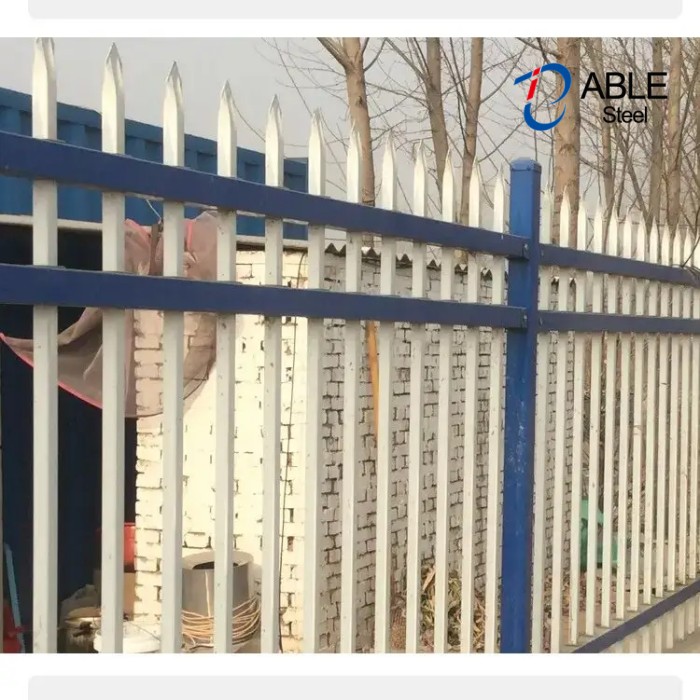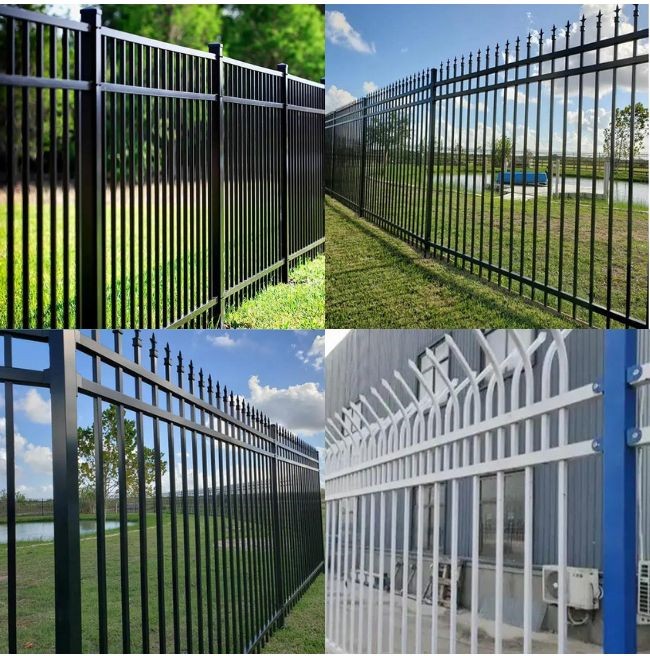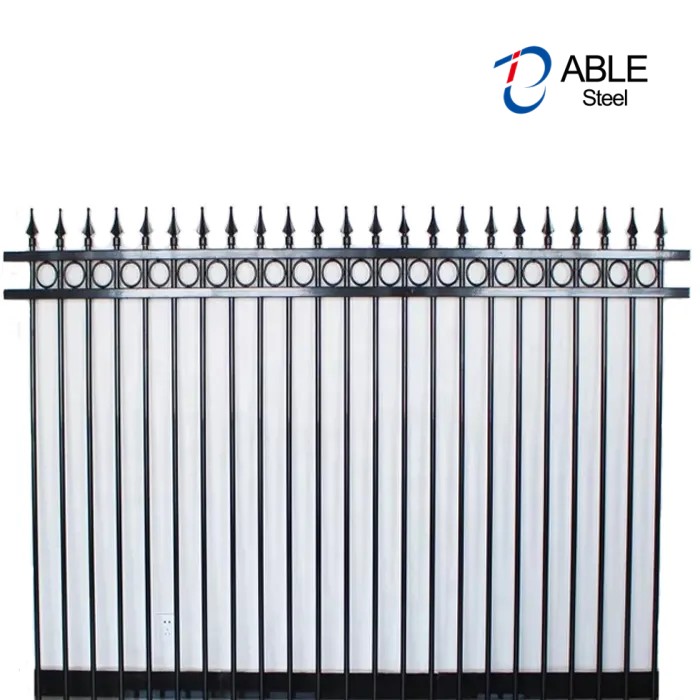The production process of an iron fence for home and garden decoration typically involves several steps. These steps may vary depending on the specific design and requirements of the fence, but the general process is as follows: 1. Design and Planning: The first step is to create a design for the iron fence. This may involve working with a designer or using computer-aided design (CAD) software to create a 3D model of the fence. The design should take into account the desired height, style, and any specific decorative elements. 2. Material Selection: Once the design is finalized, the next step is to select the appropriate materials for the fence. Iron is the primary material used, but other metals such as steel or aluminum may also be used. The material selection may depend on factors such as durability, cost, and aesthetic appeal. 3. Cutting and Shaping: The selected iron or metal is then cut into the required lengths and shapes. This can be done using various cutting tools such as saws or plasma cutters. The metal is shaped according to the design, including any decorative patterns or motifs. 4. Welding: The individual pieces of iron or metal are then welded together to form the fence panels. Welding involves heating the metal to a high temperature and joining the parts together using a welding machine. This process ensures the structural integrity of the fence. 5. Surface Treatment: After welding, the fence panels undergo surface treatment to enhance their appearance and protect them from corrosion. This may involve processes such as sandblasting, galvanizing, or powder coating. These treatments provide a smooth finish and improve the durability of the fence. 6. Assembly and Finishing: Once the individual fence panels are ready, they are assembled together using connectors or brackets. This step involves attaching the panels to posts or pillars to form a complete fence structure. The fence may also include gates or other functional elements. 7. Quality Control: Before the final product is ready for installation, it undergoes a quality control check. This involves inspecting the fence for any defects, ensuring that it meets the required specifications and standards. 8. Packaging and Shipping: Once the iron fence passes quality control, it is packaged and prepared for shipping. The packaging is done to protect the fence during transportation and prevent any damage. 9. Installation: Finally, the iron fence is delivered to the customer's location, where it is installed by professionals. The installation process may involve digging holes for the fence posts, securing the fence panels, and ensuring proper alignment and stability. Overall, the production process of an iron fence for home and garden decoration involves designing, material selection, cutting, shaping, welding, surface treatment, assembly, finishing, quality control, packaging, shipping, and installation. Each step is crucial in creating a high-quality and visually appealing iron fence for home and garden decoration.



